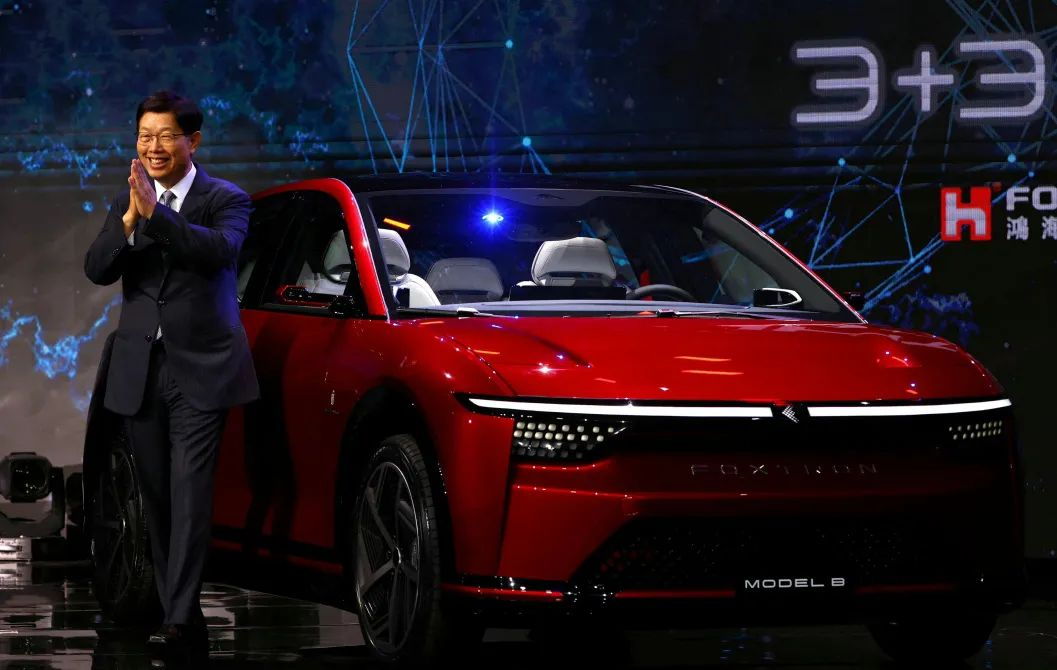Author: Big Eyes
Model B, Model C, and Model V are not new models from Tesla, but rather new products recently released by Foxconn.
On October 18th, Foxconn’s parent company, Hon Hai Group, unveiled three new electric vehicles: the mid-size SUV Model C mass production version, the all-electric two-door Model B, and the electric pickup Model V. Together with the all-electric SUV Model E and electric bus Model T released last year, Foxconn has now announced five models, establishing a relatively complete model matrix.
Among them, the mass-produced mid-size SUV Model C unveiled this year will be named as the Luxgen N7, and will be sold by Taiwanese local automaker Yulon Motor starting next year.
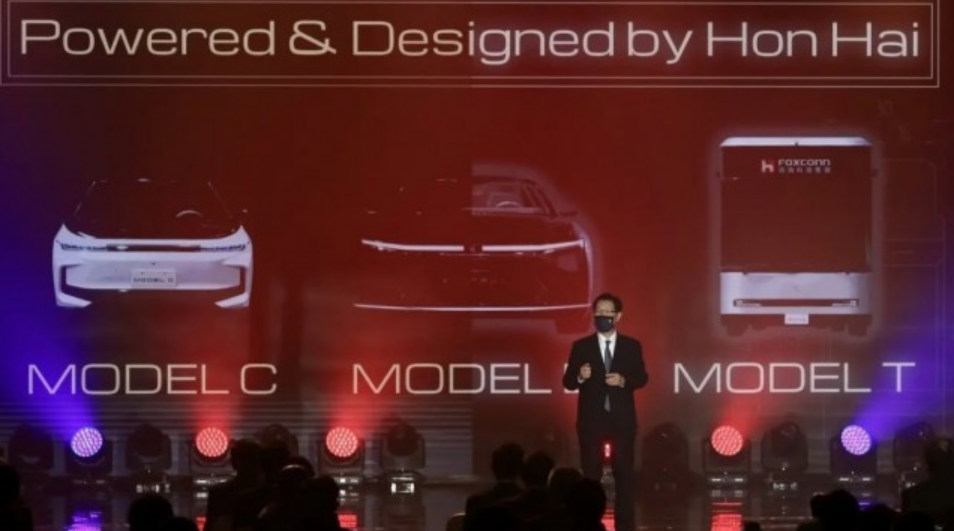
This is not the first time that Foxconn has “plagiarized” Tesla. Not only did they use the “Model” naming convention, but even their future goals are closely related to Tesla.
Just when you thought Foxconn would enter the automotive industry and become the next new force in the automobile industry, the statement made by Liu Yangwei, chairman of Hon Hai Technology, at the press conference that “I hope that one day, Hon Hai can help Tesla make cars” must have surprised a lot of people.
“Apple’s Foundry” Urgently Needs Transformation, But It’s Hard to be an OEM
In the consumer electronics field, Foxconn’s OEM business accounts for about 40% to 45% of the overall market share, making it the undisputed “king of OEMs”. However, the consumer electronics market has long since peaked, and with Apple intentionally supporting other OEM companies such as Pegatron and Flexium Interconnect, the rising space left for Foxconn’s consumer electronics OEM business is very limited.From a profit perspective, Foxconn’s gross profit margin has dropped to 8.31% in 2021. Such a low gross profit margin will force Foxconn/Hon Hai to seek new business to enhance the company’s self-generating ability.
From Foxconn’s perspective, the difficulties and risks faced in venturing into car manufacturing are actually greater than those encountered in their contract manufacturing business.
Currently, the competition in the global automotive market is extremely fierce. Not only have many new players emerged in the Chinese, European, and American markets, but many traditional automakers have also started the transformation towards electrification. Foxconn not only lacks the experience in car manufacturing accrued by traditional automakers but also lacks the generational advantages in core technologies such as autonomous driving and intelligent cabins.
In terms of brand power and channel deployment, they also need to start from scratch, and in every aspect, they are far from the leading companies in the industry.
As for Tesla, they are not only able to design their own chips and build supercomputers, but they also have profound accumulations in autonomous driving, three-electric systems, and even the field of rocket satellites.
In fact, Apple’s other major contract manufacturer in China, Luxshare Precision, has already participated in Chery’s equity reform. Through investment in Chery, it has entered the automotive industry.
Due to their tight business dealings with Apple, Foxconn and Luxshare Precision were once regarded as two enterprises that hoped to contract manufacture for Apple’s electric car project. Unfortunately, although Apple’s electric car can be heard, its presence cannot be seen. Apple can afford to “meticulously craft” their project, but Foxconn cannot; the transformation of contract manufacturing enterprises in the consumer electronics industry is inevitable.## Why Choose Tesla?
According to Elon Musk’s plan, Tesla plans to achieve a sales scale of 20 million vehicles per year by 2030. In order to achieve this goal, it poses significant challenges to Tesla’s manufacturing, logistics, and even quality control.
On the one hand, Tesla needs to invest a lot of resources in the manufacturing side and manage a very large team. From a perspective of capital utilization efficiency, it is still questionable whether the profit margin of the manufacturing side can match Tesla’s higher gross profit margin for the whole vehicle.

On the other hand, putting too much effort into manufacturing will certainly involve a lot of Tesla’s energy. Although Tesla already has the ability of self-sufficiency, it is still a considerable pressure to carry such heavy assets all of a sudden. Moreover, if the international situation reverses, and Tesla’s sales volume declines or is unable to reach the scale of 20 million vehicles, the production capacity of Tesla’s early investment layout will produce a relatively high vacancy rate, which will affect the overall financial data of the enterprise.
So from this dimension of view, seeking OEM partners may share the profit of manufacturing, but it is also an effective method to hedge various risks when facing a relatively uncertain future.
From the perspective of Foxconn, it has set itself an ambitious goal-to achieve a 5% market share for electric vehicle business by 2025. For the automotive industry, which is difficult to dominate by one company, a 5% market share is an unrealistic goal for Foxconn to build its own cars. To achieve this goal, Foxconn can only rely on larger and more mature car companies.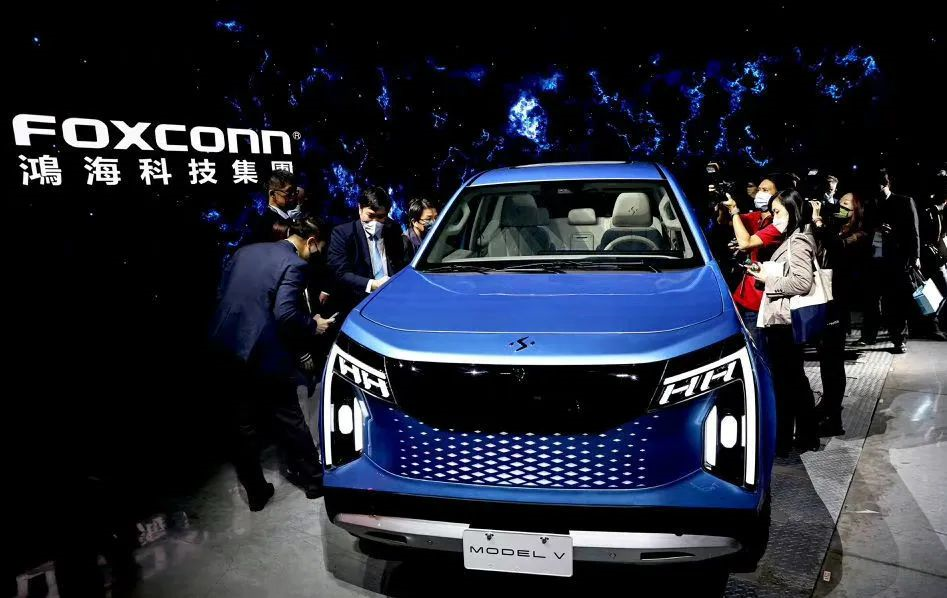
In the current market, the electric vehicle companies that are thriving and have a certain size are mainly BYD and Tesla.
Considering the history between Foxconn and BYD, Tesla seems to be the best choice for Foxconn. If they could get Tesla’s contract manufacturing order, that would help Foxconn/Hon Hai establish a benchmark in the market, and lay a solid foundation for expanding their own complete vehicle manufacturing diagram in the future.
However, is Tesla willing to “provide shade” for Foxconn like a big tree? In the short term, the possibility is very small.
What is the prospect of the auto contract manufacturing industry?
There are not just a few car companies in China that want to do contract manufacturing, not just Foxconn.
Previously, Geely Automobile, which has established a joint venture company with Foxconn, also intends to open up the contract manufacturing market. Jidu Automotive, a joint venture initiated by Baidu, will be manufactured by Geely, taking the path of joint venture carmaker curve contract manufacturing. Currently, BYD, which is dominating the domestic market, has also established a joint venture company with Didi for manufacturing Didi D1.
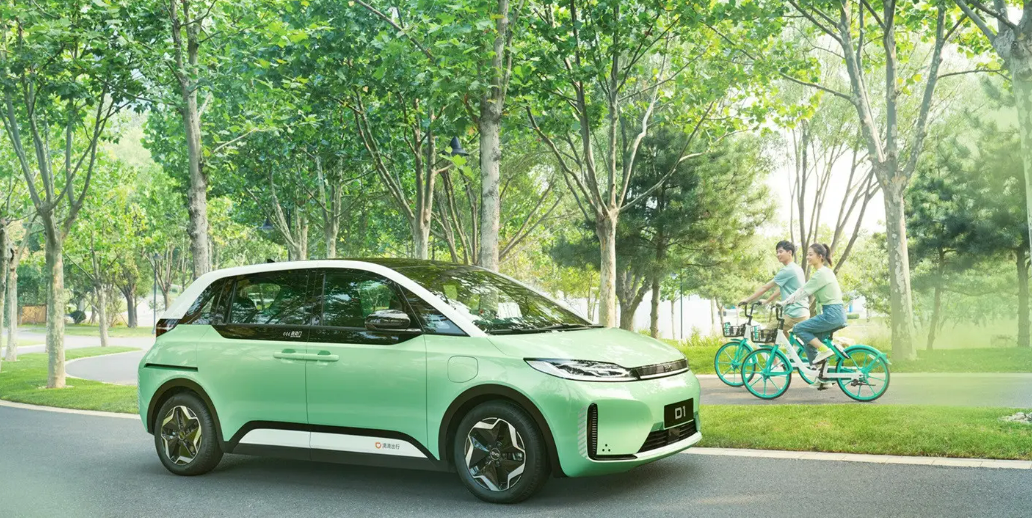
Among them, the model between Geely and Jidu is worth mentioning the most. In the cooperation between Geely and Baidu, Geely not only contributes qualifications and its own supply chain system but also the first model of Jidu Automotive will be based on Geely’s SEA Magnificent architecture. Baidu contributes more in terms of vehicle networking and autonomous driving-related technologies. Therefore, in addition to providing factory qualifications, a large part of Geely’s contract manufacturing is still complete vehicle engineering services.Perhaps influenced by Geely, Foxconn also spared no effort to build prototype cars to prove to its customers that it has the ability to design and manufacture electric cars for them.
After all, Foxconn used to mostly help Apple with OEM manufacturing in the consumer electronics industry, where the complexity and integration of products and production lines are far lower than in the automotive industry. It is a huge challenge to convince partners that it can produce cars, let alone produce them well.
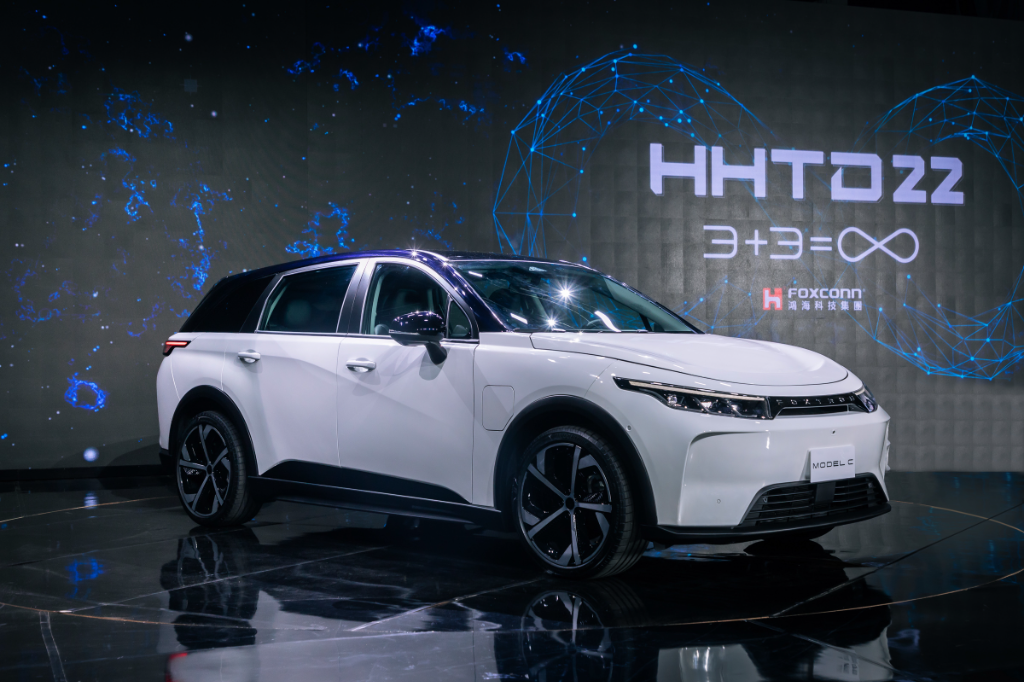
To this end, Foxconn not only partnered with Yulon Motor, a local company in Taiwan, to leverage its experience in vehicle engineering, but also invested heavily in developing multiple mass-producible car models. In this way, Foxconn aims to prove to its customers that it has the ability to design a complete vehicle, making it a “low blow” to many automakers hoping to make cars by outsourcing production and relying on Foxconn’s services.
However, designing or manufacturing a complete vehicle is a long-term experience that Foxconn has yet to accumulate. A BP (Best Practice) within a foreign vehicle company may be the product of several engineers with decades of experience in their field. In the field of vehicle engineering, especially in the design and testing and certification phases, Foxconn’s experience is not enough. In this case, how to strengthen its collaboration with Yulon Motor and leverage their experience to help Foxconn quickly build up its OEM car manufacturing capabilities is also a test for Foxconn and Hon Hai.
Moreover, there are not only new entrants like Foxconn who want to make cars by outsourcing production, but also countless traditional automakers in China with qualifications and experience in car manufacturing also want to get into the act.
Is the light asset model for automakers feasible?
For automakers, the light asset model has advantages and disadvantages:From the current situation, new energy vehicle manufacturers are abandoning the OEM model and turning to self-production. Aside from the fact that the OEM model requires sharing profits with the OEM party, once a quality problem arises, there may also be issues of mutual buck-passing between the manufacturing end and the engineering end. Moreover, with the increasingly optimized intelligent electric vehicle technology, more and more vehicle manufacturers want to control the core process of car manufacturing in their own hands.
On the positive side, the current domestic automobile production capacity is seriously overcapacity. As of the end of 2021, the total production capacity of passenger cars in the country reached 40.89 million units, with a utilization rate of 52.47%, which is in the severely overcapacity range.
In addition, vehicle manufacturers with production qualifications will have 10.46 million units of production capacity under construction that will be put into production successively. Therefore, if new entrants in the industry build production capacity, they will inevitably exacerbate the overcapacity situation in the industry. In this situation, it is better to invest more funds in core technology research and development and brand building, rather than in production facilities such as factories.
In fact, the well-known Mercedes-Benz G-Class has always been produced by Magna, while China’s NIO was initially produced by Jianghuai Motors. Through OEMs, the limited resources of the entire vehicle enterprise are better focused, but higher requirements are put forward for quality control. If the processing quality can be well controlled, then the OEM model or the entire light asset model of the vehicle enterprise may still be successful.Compared with consumer electronics, there are many more difficulties in front of OEMs for complete vehicles. For an OEM, as important as gross profit margin is its dominant position in the upstream of the entire industry chain. It is unacceptable in any case to let another company firmly hold its lifeline.
Therefore, in the short term, Foxconn’s OEM model may be more suitable for new players who have just started and do not have very strong funds. As for Tesla giving a part of the 20 million sales volume to Foxconn for OEM, even if it’s possible, it also requires Foxconn to have a very close cooperation with Tesla in the early stage. After all, the complexity of assembling a car is far from comparable to assembling a smartphone.
Outside of Tesla, Foxconn may be more hopeful that Apple’s car will come out as soon as possible and rely on Apple’s fans to quickly boost sales. In this way, Foxconn will be able to quickly find a new business pillar. Although the gross profit margin of complete vehicle OEM may not be high, its attractiveness is obviously much greater than that of OEM smartphone business.
Dreams are beautiful, but it is not easy to realize the dreams that depend on the OEMs. The next step depends on what kind of services and performances Terry Gou himself can use to impress OEM customers.
This article is a translation by ChatGPT of a Chinese report from 42HOW. If you have any questions about it, please email bd@42how.com.
